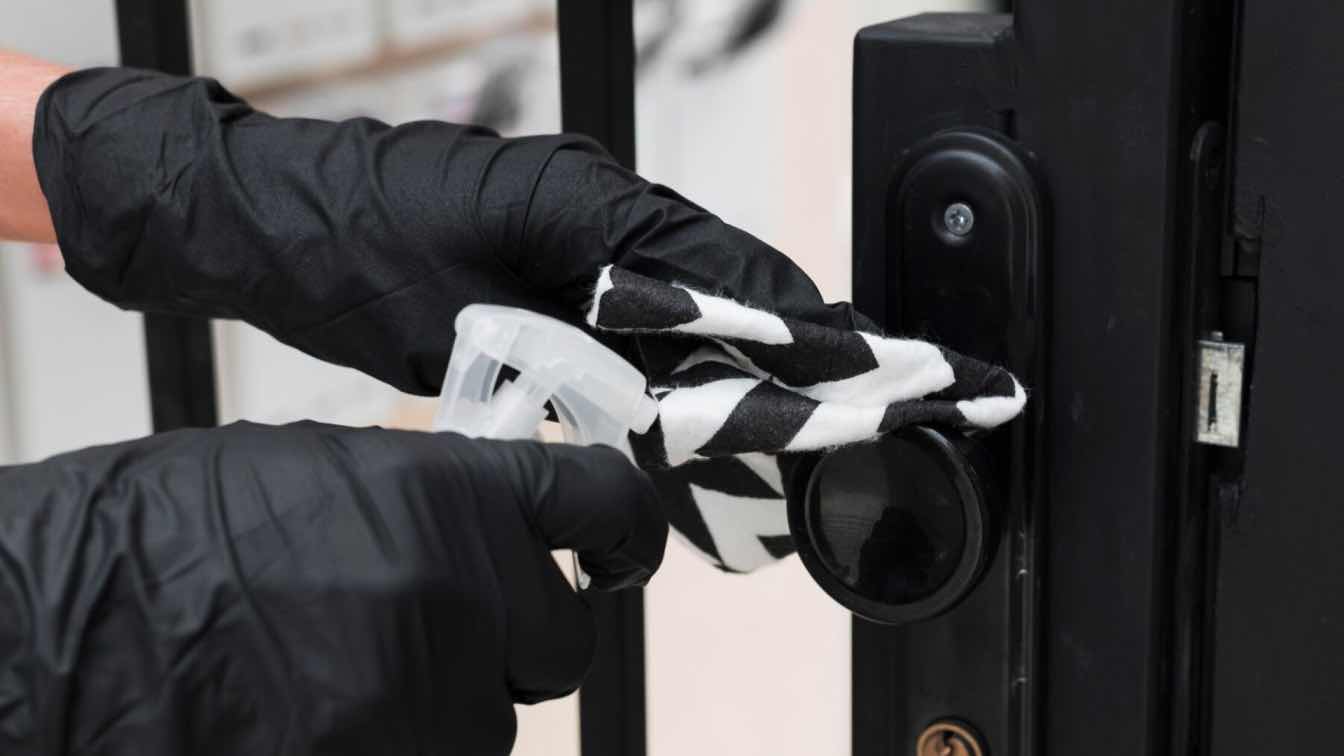Dealing with a stubborn door handle or a finicky lock can be frustrating, especially when you're in a hurry. Fortunately, many common door hardware issues are surprisingly simple to fix on your own.
In this post, we’ll explore the most frequent door handle and lock problems, explaining why they occur and how you can resolve them with some straightforward DIY solutions. Whether it’s a loose handle, a stuck key, or a problematic deadbolt, we’ve got the tips and tricks to get your doors operating smoothly again.
Let’s dive in and tackle these issues together!
Common Issues with Door Handles
Door handles are essential for daily operation, but they frequently develop a few typical faults as a result of repeated usage and wear. Here's how to deal with these effectively:
Loose Handle
A common problem with door handles is looseness, which is usually caused by the progressive loosening of the screws that hold the handle in place. To resolve this, tighten the screws on the handle's faceplate. If they continue to loosen, using a little quantity of thread-locking glue can provide a longer-lasting solution.
Sticking Handle
It might be the result of misaligned locking mechanism or buildup of filth if your door handle sticks or is hard to turn. Using a soft cloth and a light cleanser, wipe the area around and inside the handle. Applying a little amount of a silicone-based lubricant to the moving components will assist with persistent sticking, but be cautious not to use too much as this could draw in more dirt.
Handle Not Engaging
A misaligned strike plate or a damaged latch are common causes of door handles that do not contact the latch mechanism appropriately. If the strike plate is out of alignment, realign it, and if the latch looks worn out, replace it.
By taking care of these problems, you can preserve the functionality and security of your door as well as greatly increase the lifespan of your door handles.
Frequent Lock Problems
Locks are critical to home security, but they're not immune to problems. Here are some of the most common issues you might face with your locks and straightforward solutions to fix them:
Key Stuck in Lock
Sometimes a key gets stuck in the lock due to a jammed pin or a misaligned mechanism. First, try gently wiggling the key back and forth to see if it will come loose. If it remains stuck, apply a spray lubricant to ease the key out without forcing it, as this can cause the key to break inside the lock.
Lock Turns But Doesn’t Open
This frustrating issue often stems from a misaligned bolt or latch. Check the alignment of the lock with the strike plate on the door frame. Adjusting the strike plate slightly might resolve the problem. If the mechanism itself is faulty, however, the lock may need to be repaired or replaced.
Difficulty Locking or Unlocking
This can be caused by a dirty or rusty lock mechanism. Cleaning the lock with a suitable lubricant can help improve its function. For rust, use a specialized rust remover and apply lubricant afterward to prevent further issues.
By tackling these common lock issues promptly, you can ensure your locks remain functional and secure, keeping your home safe from intruders.
Issues with Lock Mechanisms
The security and operation of your door depend heavily on the lock mechanism, but poor installation or general wear and tear can cause a number of issues. The following are some common lock mechanism problems and solutions:
Faulty Deadbolt
In the event that your lock malfunctions, it could not penetrate the door frame completely, so jeopardizing the security of your door. Verify that the deadbolt and strike plate are properly aligned. Realign the striking plate or replace it if misalignment is the problem. It can be necessary to replace the deadbolt if it is worn out or broken.
Worn Out Cylinder
A lock's cylinder may eventually wear down, especially with repeated usage, making it harder to turn the key or maybe impossible to operate. Changing the cylinder may sometimes be a simple fix to get your lock working again without having to replace the locking mechanism as a whole.
Seized Lock Mechanism
Lack of maintenance can result in a seized lock mechanism, in which the internal components freeze or bind. To remedy this, put a penetrating lubricant to the keyhole and turn the key in and out to disperse the lubrication throughout the mechanism. If this does not fix the problem, the lock may have to be dismantled and cleaned by a professional.
Addressing these issues not only guarantees that your locks continue to function properly, but also protects the integrity of your home's security system.
Weather-Related Problems
Weather conditions can significantly impact the performance of door locks and handles, especially in extreme climates. Here’s how to handle some common weather-related issues:
Contracting and Expanding
Locks and handle metal components can expand in hot weather and contract in cold weather, which can occasionally cause the handle to misalign with the striking plate. To protect against temperature fluctuations, utilize weather stripping or adjust the striking plate to account for these changes.
Moisture and Corrosion
Moisture may cause rust and corrosion in metal locks, particularly in humid or wet situations. To address this, clean and lubricate your locks on a regular basis using a silicone-based or graphite lubricant that acts as a moisture barrier. For rusted locks, applying a rust remover followed by a lubricant can assist restore function and prevent future degradation.
By proactively addressing these weather-related issues, you can ensure your door hardware remains functional and secure throughout the seasons.
Smart Lock-Specific Issues
Smart locks bring modern convenience to home security, but they can encounter unique issues:
Connectivity Problems
Smart locks require steady connections to perform properly. If your lock is having problems connecting to your home network, make sure the router is at a reasonable distance and there are no interference sources. Restarting the lock and router can occasionally fix connectivity problems.
Battery Issues
Low battery levels might cause smart locks to fail. Replace batteries regularly, following the manufacturer's guidelines. If the lock remains unresponsive even after replacing the batteries, check for corrosion on the connections and clean as needed.
Preventative Maintenance and Care
Regular maintenance can extend the life of your door hardware and prevent many common issues:
Regular Cleaning
To avoid dirt collection that might cause wear and malfunction, wipe off your locks and handles regularly using a dry cloth.
Lubrication
Apply silicone-based lubrication to moving components once a year to guarantee smooth operation and avoid sticking or seizing.
Check and Tighten
Periodically ensure that all screws and fittings are snug and secure to avoid looseness and misalignment, which can impair operation.
When to Call a Professional
While many door hardware issues can be resolved with DIY methods, some situations require professional expertise:
Complex Repairs
If a lock mechanism is broken inside or the electronics of a smart lock are malfunctioning, it is safer to seek expert assistance.
Installation Errors
Improperly placed locks might cause long-term complications. If difficulties continue despite changes, expert installation may be required.
Security Upgrades
Professional installation guarantees that locks are properly placed and perform ideally for high-security applications.
If your problems go beyond easy solutions, try contacting the experts at Okey Locksmith for dependable and skilled help.
With the correct information and equipment, dealing with door handles and lock difficulties becomes doable. Understanding frequent problems, performing easy solutions, and maintaining your hardware can guarantee that your doors run smoothly and safely.
However, if the problem becomes complex or you're hesitant about a DIY repair, it's best to bring in the experts. Get experienced guidance and high-quality service. They have the necessary experience to solve any door hardware difficulty, ensuring that your property is both secure and elegant.





